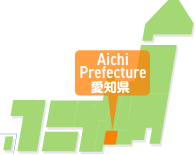I don't know how to ride a Japanese bus! How to get on and off, and etiquette
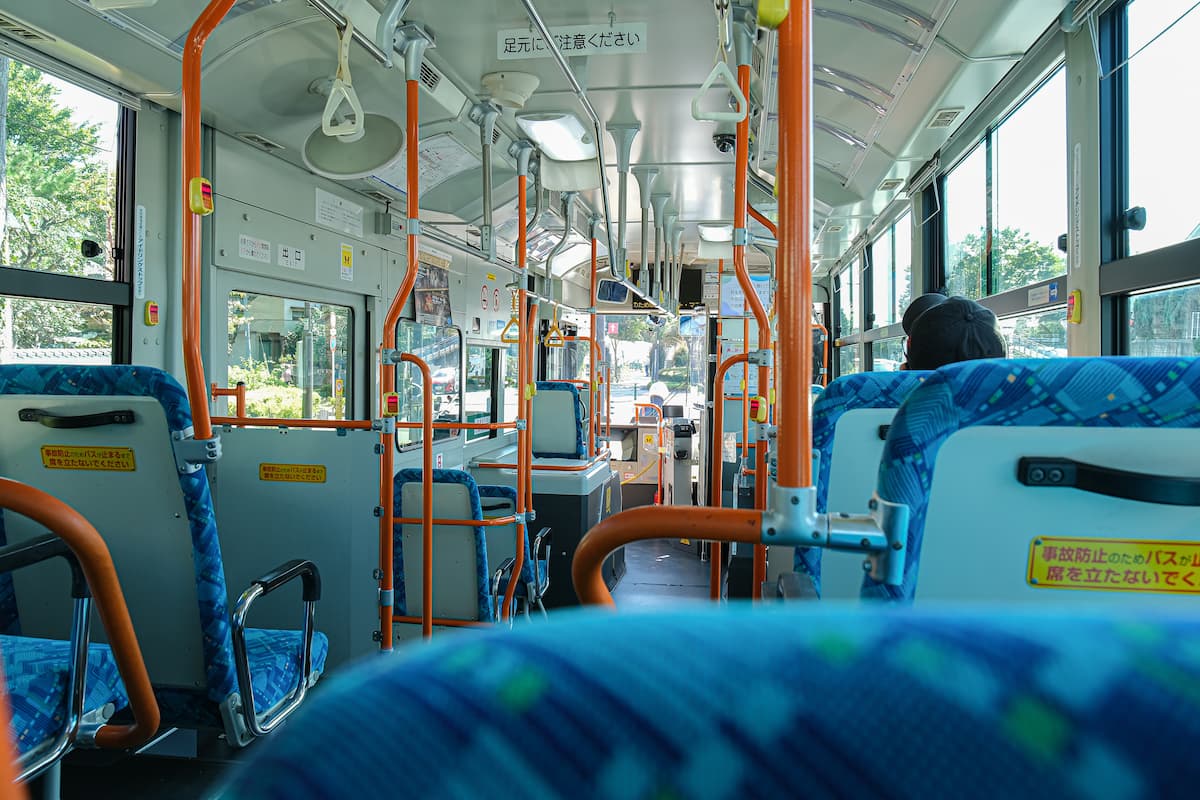
Hello, this is Kano from JAC (Japan Association for Construction Human Resources).
Foreigners, have you ever ridden a local bus in Japan?
If you don't know how to ride the bus in Japan, you may find yourself in trouble.
This time, we will introduce how to ride Japan's route buses.
We will provide detailed explanations on how to check bus schedules, how to get on and off the bus, and how to pay the fare.
Please feel free to use this as a reference.
First, check the bus times!
There are two ways to check bus schedules in Japan.
How to check bus times ① Use your smartphone or computer
You can check bus schedules on the website using your smartphone or computer.
Some popular websites include:
Enter the name of the bus stop you want to board from and the name of your destination bus stop to search.
Once you start inputting, bus stop suggestions will automatically appear, which is very convenient.
By selecting a date and time, you can also check bus times close to the selected date and time.
If you don't know the name of the bus stop, there are websites that will show you bus stop suggestions if you enter the address or name of the facility.
You can also use the website or app to find out the fare to your destination.
How to check bus times ② Check at the bus stop
You can go to the bus stop and check the bus schedule.
At the bus stop, there is a paper (timetable) posted that shows the destination, bus number, and departure time of the bus.
Bus times are listed separately for weekdays (Monday to Friday) and weekends and holidays (Saturday, Sunday, and public holidays).
Please note that bus times are often different on weekdays and on weekends and holidays.
The last bus leaves earlier than the train.
Be careful if you take the bus late at night.
In big cities such as Tokyo, buses sometimes run after midnight.
For those who don't know how to ride a bus in Japan! How to get on, get off, and pay
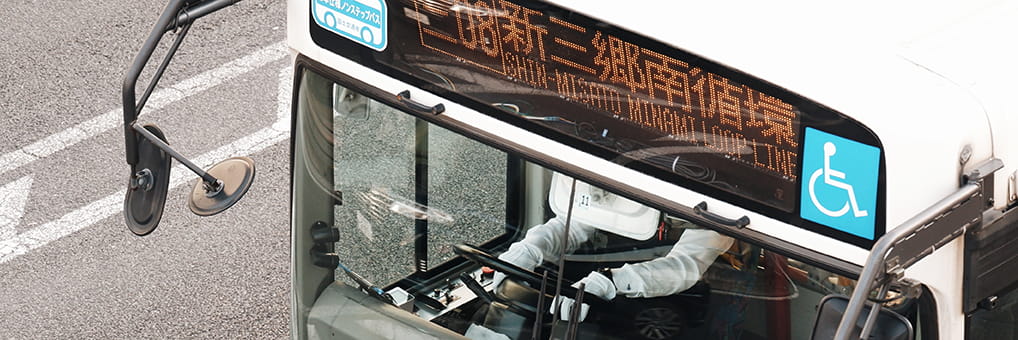
We will explain how to get on and off the bus in Japan, and how to pay for it.
How to ride the bus
Before getting on the bus, first check your destination at the bus stop.
There is a bus stop with the same name going in the opposite direction across the road.
The destination is written on the bus stop, so be sure to check it.
At the bus stop, buses bound for various destinations arrive.
When the bus arrives, check the bus number and destination on the bus's electronic display board.
Make sure it's the bus you want to take before getting on.
Electronic display boards showing bus numbers and destinations are located at the front of the bus and next to the doors.
If you're unsure, just ask the driver when you get in and they'll tell you if they're going to your destination.
There are buses where you board from the front door and buses where you board from the middle door.
The bus will usually stop so that the boarding door is at the bus stop location.
Therefore, you can just board from the door closest to the bus stop.
How to get off the bus
When you want to get off the bus, press the stop button before you arrive at your bus stop.
If there is no one waiting at the bus stop, the bus will not stop unless you press the stop button.
When getting off the bus, exit through the opposite door to the one you boarded.
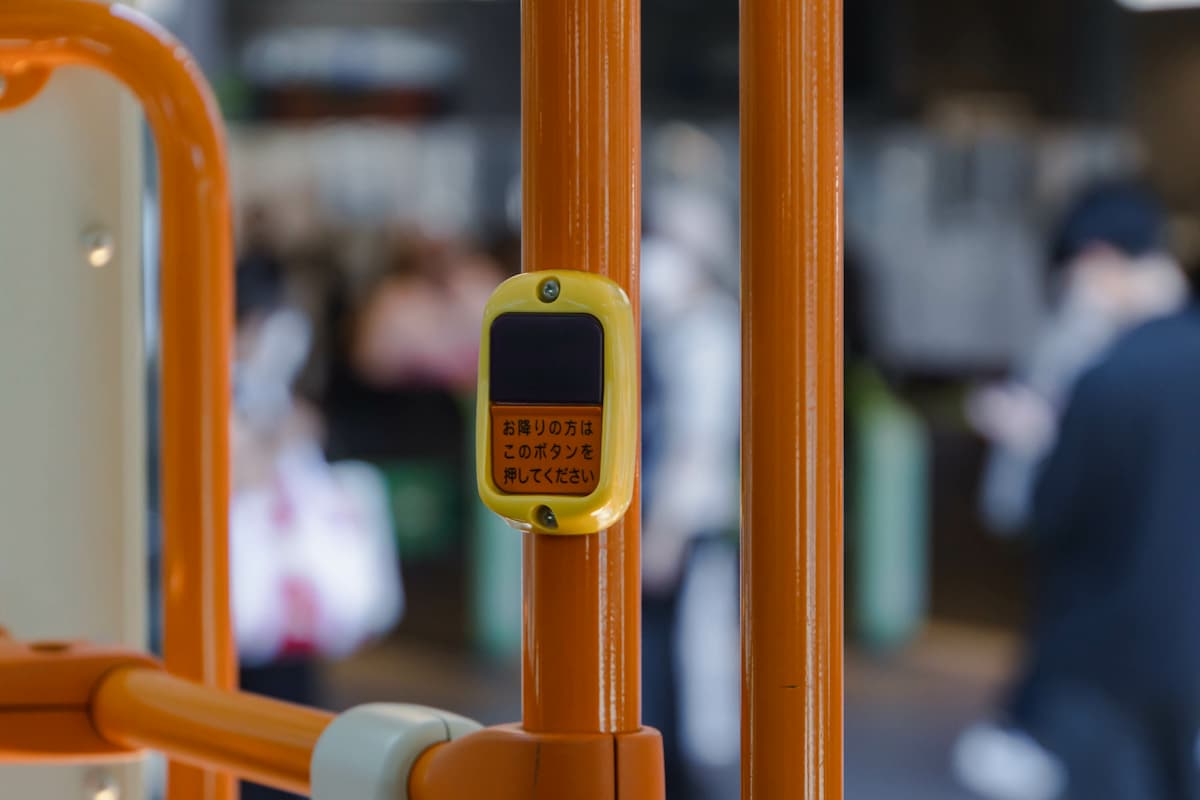
How to pay for the bus
There are two ways to pay for the bus fare: by IC card or by cash.
Be careful, there are buses where you pay the fare up front and buses where you pay when you get off.
[For buses where the fare does not change depending on the distance traveled, pay in advance]
The fare is the same no matter how far you travel, regardless of the distance.
For this bus, you board through the front door and pay when you board.
When you get off, exit through the middle door.
<When paying with an IC card>
When you board the bus, place your IC card over the sensor in the fare box next to the driver's seat.
When you hear a beep, release it.
<If paying by cash>
When you get on, you put your money into the fare box next to the driver's seat.
[For buses where the fare varies depending on the distance traveled, pay later]
For buses where the fare varies depending on the distance traveled, you pay when you get off.
When boarding, enter through the middle door.
Once you have paid, exit through the door next to the driver's seat.
<When paying with an IC card>
When you get on the bus, place your IC card on the sensor near the door.
When you hear a beep, release it.
When the bus stops at your desired stop, place your IC card over the sensor in the fare box next to the driver's seat.
When you hear a beep, release it.
<If paying by cash>
When you board the bus, don't forget to take your numbered ticket near the door.
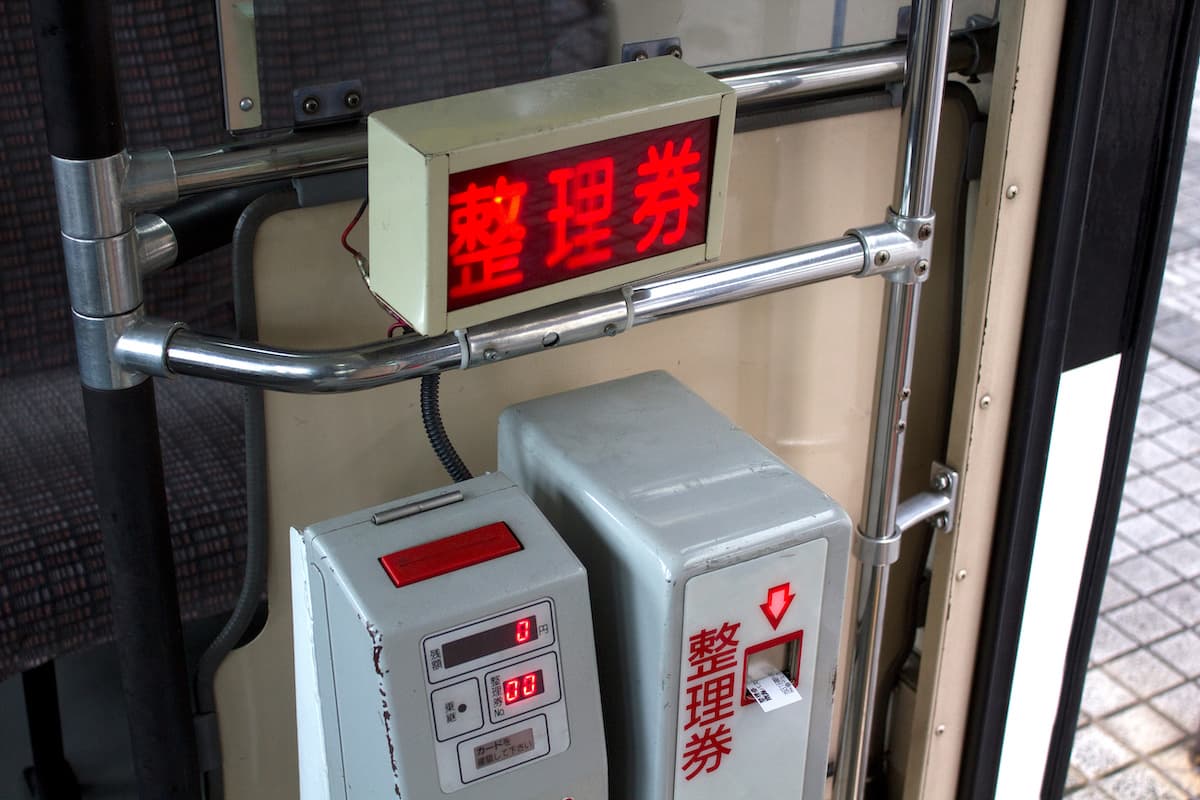
The ticket number will be written on the display board at the front of the bus.
The fare will be displayed below.
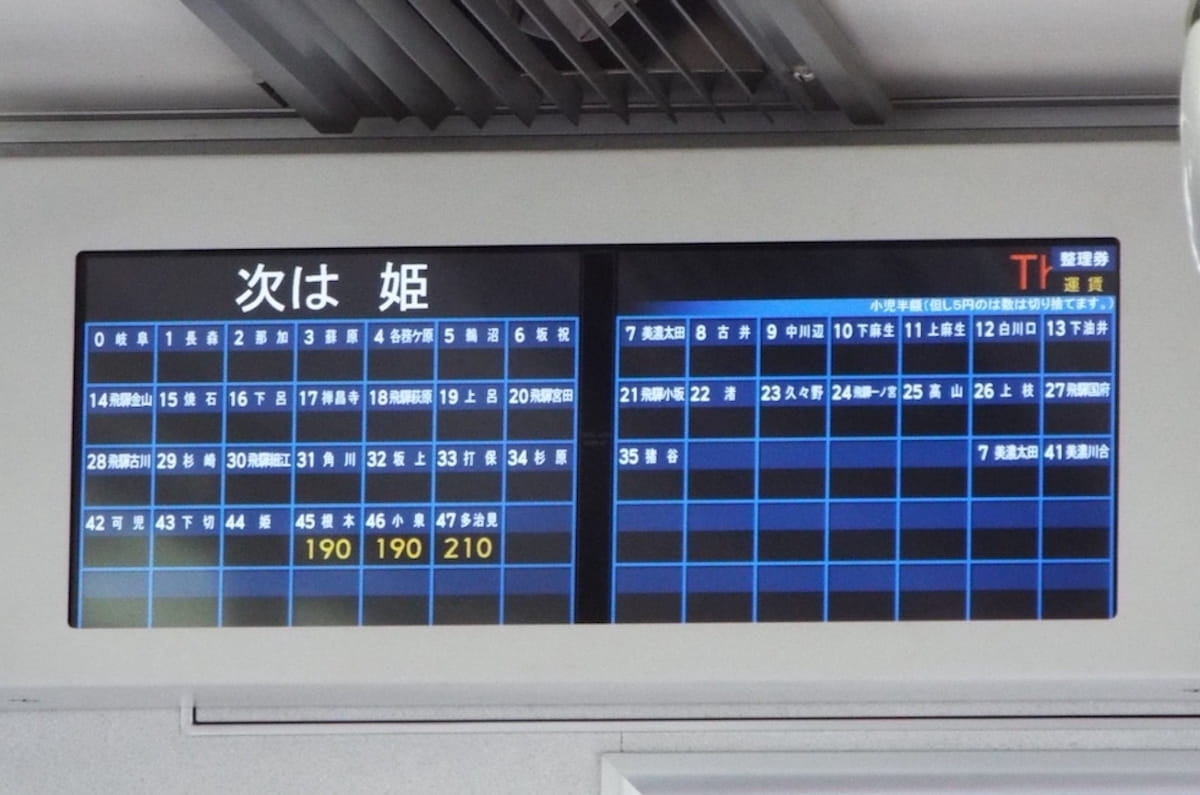
If the distance changes, the fare also changes.
When you get off, pay the fare shown on the sign.
Please put your money and numbered ticket into the fare box next to the driver's seat.
[How to purchase and charge an IC card]
IC cards can be purchased from ticket machines at stations, bus company counters, convenience stores, etc.
You can load money onto your IC card at ticket machines, bus ticket counters, convenience stores, and on the bus.
On the ticket machine, press the "charge" button.
Then, insert your IC card and select the charge (deposit) amount.
Put money into the ticket machine and the charge (deposit) is complete.
At bus company counters and convenience stores, staff will charge the card.
Tell the store clerk, "I'd like to charge."
If you wish to charge your card on the bus, please inform the bus driver that you would like to charge your card.
If you have registered your IC card on your smartphone, you can charge it from your smartphone.
Things to note when paying on the bus
There are two things to keep in mind when paying on the bus:
No change
If you put in too much money on the bus, you won't get any change.
(If the bus fare does not change depending on the distance traveled, you may be given change.)
If you don't have the exact amount, you can exchange money.
The change machine is located near the fare box.
You can exchange money when the bus is stopped at a traffic light or when you get off.
It is dangerous to move around on the bus when it is moving.
It is often not possible to exchange 10,000 yen or 5,000 yen notes in the currency exchange machines, so you will need to ask the driver to exchange them for you.
If you want to exchange a large amount, you may be refused, so if possible, prepare coins such as 100 yen and 10 yen coins.
Some buses cannot be boarded with IC cards
Depending on the area, IC cards may not be usable.
Please check first whether IC cards can be used on the bus.
When in doubt, it's a good idea to carry some cash with you.
Also check out the etiquette for riding a Japanese bus!
There are some manners you should be aware of when riding the bus in Japan.
Do not talk loudly, do not use the phone, and do not eat or drink.
When riding the bus, try not to talk loudly.
Please make the call after you get off the train.
If you absolutely must answer the phone, try to speak in a low voice.
Additionally, eating packed lunches or drinking alcohol on the bus is prohibited.
Priority seats are available to those who need them
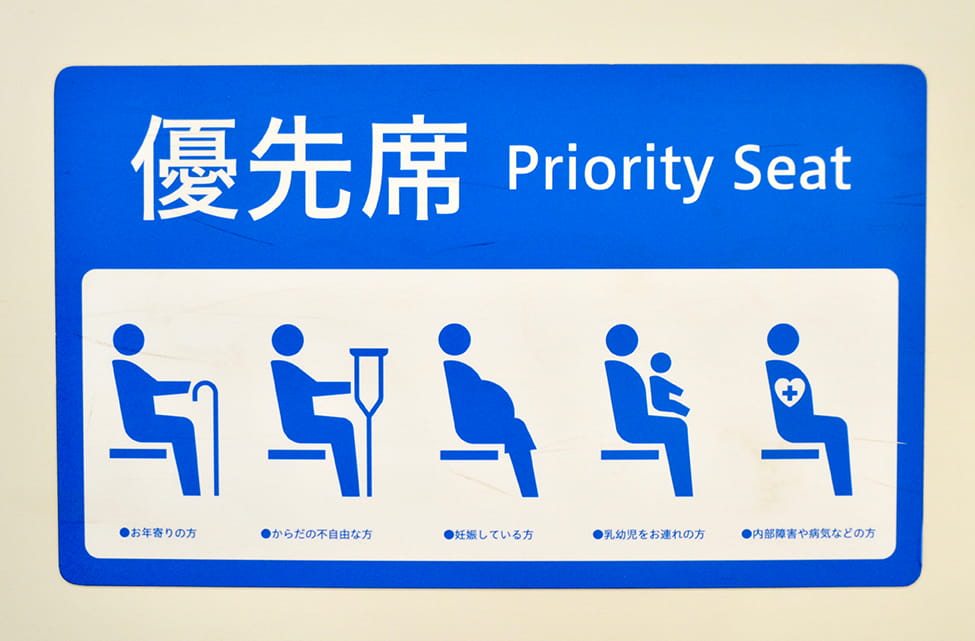
Priority seats are seats that are given priority to the following people:
- Elderly
- People with disabilities
- Pregnant people
- People with infants (babies or small children)
- Sick people
You can sit down if it's available.
If an injured person or an elderly person gets on the train, offer your seat to them.
Also, if you see someone wearing a help mark, offer your seat to them.
A help mark is worn by people who need help due to an invisible disability or illness.

Hold on to a strap or handrail
If there are no seats available, you have to stand.
It's dangerous, so please hold on tightly to a strap or handrail.
You should not sit on the floor.
The etiquette for riding buses in Japan is similar to that for riding trains.
Here's how to ride the train.
Don't know how to ride Japanese trains? Learn how to buy tickets and the process
Summary: Learn how to ride the Japanese bus for convenience
You can check bus times in Japan by looking at websites or bus stop timetables.
There are also websites available in foreign languages, so try making use of them.
There are two ways to pay for the bus: "pay later" and "pay in advance."
If you pay later, board from the middle door, if you pay in advance, board from the front door.
When you want to get off, press the button.
If you forget to press the button, the bus may not stop at your stop.
When paying, remember that no change will be given.
If you don't have the exact amount of money, you can exchange it on the bus, but the change machines may not work with 10,000 and 5,000 yen notes.
If you only have 10,000 or 5,000 yen notes, ask the driver to exchange them for smaller denominations.
However, if the amount you want to exchange is large, you may not be able to exchange it.
Before getting on the bus, it's a good idea to prepare plenty of coins, such as 100 yen and 10 yen coins.
You can also pay using an IC card!
When riding the bus, please be mindful of etiquette, such as not shouting, letting those who need it sit in priority seats, and exchanging money only when the bus has stopped.
About us, JAC
JAC(Japan Association for Construction Human Resources)is an organization that supports all Specified Skilled Workers working in the Japan construction industry. We work with companies that accept Specified Skilled Workers to create a work environment that is easy for everyone to work in.
We're also taking the exams you need to become a Specified Skilled Workers!
And JAC has received many requests for job offers from companies that want Specified Skilled Workers to work for.
Specified Skilled Workers Wanted! Job Listings
For those of you who want to work in Japan using Specified Skills, we are introducing jobs that match your occupation and aspirations!
If you have any problems, please feel free to contact us!


